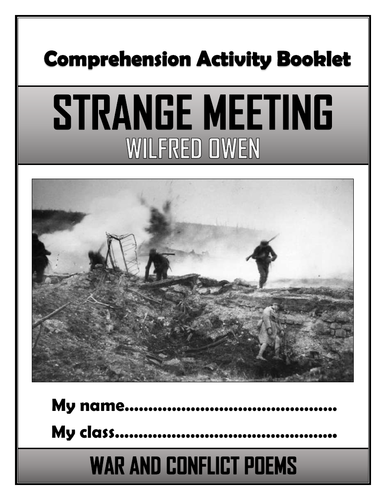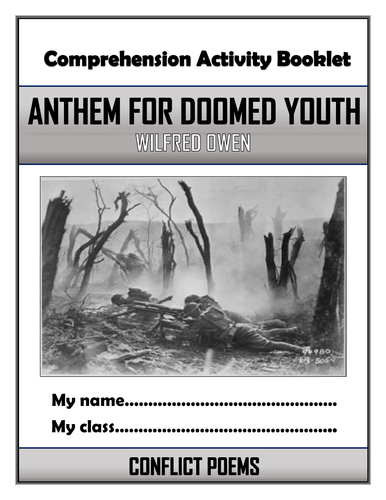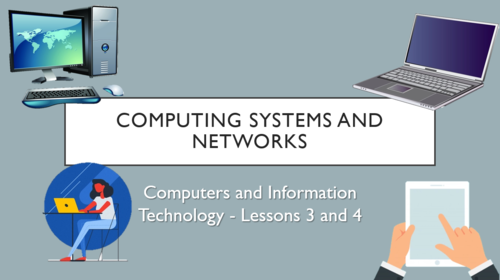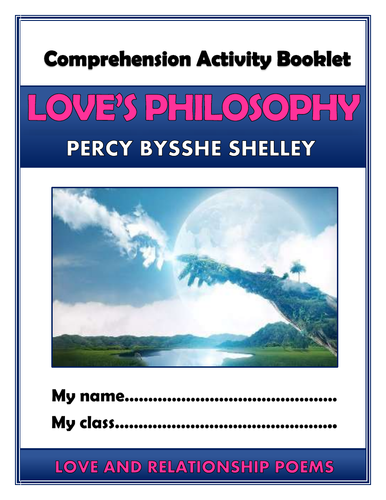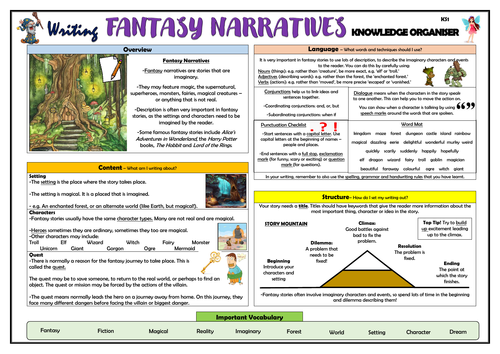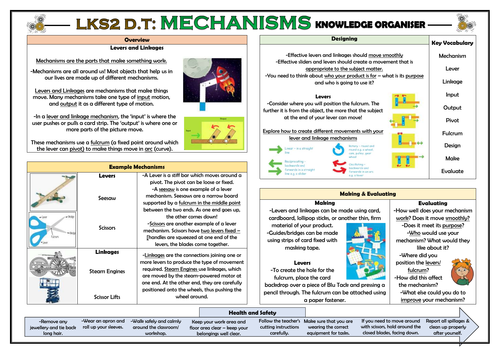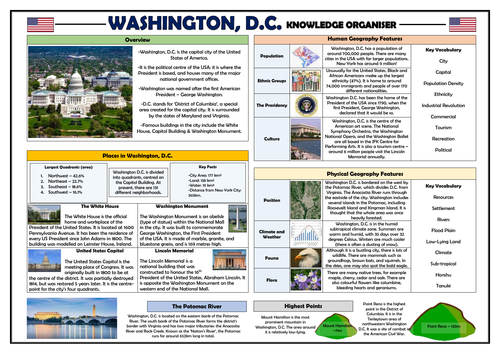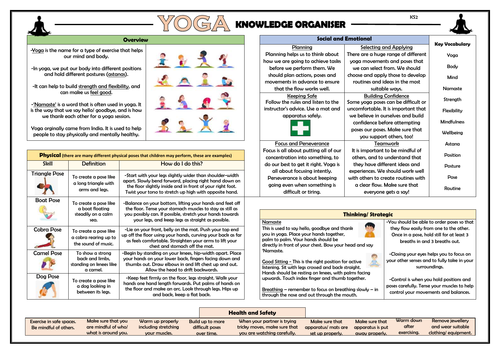
3k+Uploads
1952k+Views
2270k+Downloads
Whole school

Aftermath - Siegfried Sassoon - Comprehension Activities Booklet!
This 16-page resource booklet contains a wide range of challenging and engaging comprehension activities for use throughout the reading of Siegfried Sassoon’s World War 1 poem ‘Aftermath.’ Teachers have found the activities particularly useful throughout teaching, or for exam revision or guided reading sessions. They are perfect for aiding the progress of students towards meeting the key English Literature assessment objectives - suitable for all examining bodies. Students have found these resources extremely engaging, and it is clearly highlighted within each task regarding which assessment strands the task is designed to demonstrate.
It is provided in both Word (to allow for easy editing) and PDF (to ensure for consistency of formatting between computers).
Activities within the booklet include (amongst many others):
‘Analysing Context’ - helping students to ‘Show understanding of the relationships between texts and the contexts in which they were written.’
‘Analysing Subject Matter, Language and Structure’ - to help students to ‘Analyse the language, form and structure used by a writer to create meanings and effects, using relevant subject terminology where appropriate.’
‘Diary Entry’ - to help students to ‘Use a range of vocabulary and sentence structures for clarity, purpose and effect, with accurate spelling and punctuation. Make an informed personal response, recognising that other responses to a text are possible and evaluating these.’
‘The Speaker’ - to help students to ‘Read, understand and respond to texts. Students should be able to: maintain a critical style and develop an informed personal response use textual references, including quotations, to support and illustrate interpretations.’

They - Siegfried Sassoon - Comprehension Activities Booklet!
This 16-page resource booklet contains a wide range of challenging and engaging comprehension activities for use throughout the reading of Siegfried Sassoon’s World War 1 poem ‘They.’ Teachers have found the activities particularly useful throughout teaching, or for exam revision or guided reading sessions. They are perfect for aiding the progress of students towards meeting the key English Literature assessment objectives - suitable for all examining bodies. Students have found these resources extremely engaging, and it is clearly highlighted within each task regarding which assessment strands the task is designed to demonstrate.
It is provided in both Word (to allow for easy editing) and PDF (to ensure for consistency of formatting between computers).
Activities within the booklet include (amongst many others):
‘Analysing Context’ - helping students to ‘Show understanding of the relationships between texts and the contexts in which they were written.’
‘Analysing Subject Matter, Language and Structure’ - to help students to ‘Analyse the language, form and structure used by a writer to create meanings and effects, using relevant subject terminology where appropriate.’
‘Diary Entry’ - to help students to ‘Use a range of vocabulary and sentence structures for clarity, purpose and effect, with accurate spelling and punctuation. Make an informed personal response, recognising that other responses to a text are possible and evaluating these.’
‘The Speaker’ - to help students to ‘Read, understand and respond to texts. Students should be able to: maintain a critical style and develop an informed personal response use textual references, including quotations, to support and illustrate interpretations.’

In Flanders Fields - John McCrae - Comprehension Activities Booklet!
This 16-page resource booklet contains a wide range of challenging and engaging comprehension activities for use throughout the reading of John McCrae’s poem ‘In Flanders Fields.’ Teachers have found the activities particularly useful throughout teaching, or for exam revision or guided reading sessions. They are perfect for aiding the progress of students towards meeting the key English Literature assessment objectives - suitable for all examining bodies. Students have found these resources extremely engaging, and it is clearly highlighted within each task regarding which assessment strands the task is designed to demonstrate.
It is provided in both Word (to allow for easy editing) and PDF (to ensure for consistency of formatting between computers).
Activities within the booklet include (amongst many others):
‘Analysing Context’ - helping students to ‘Show understanding of the relationships between texts and the contexts in which they were written.’
‘Analysing Subject Matter, Language and Structure’ - to help students to ‘Analyse the language, form and structure used by a writer to create meanings and effects, using relevant subject terminology where appropriate.’
‘Diary Entry’ - to help students to ‘Use a range of vocabulary and sentence structures for clarity, purpose and effect, with accurate spelling and punctuation. Make an informed personal response, recognising that other responses to a text are possible and evaluating these.’
‘The Speaker’ - to help students to ‘Read, understand and respond to texts. Students should be able to: maintain a critical style and develop an informed personal response use textual references, including quotations, to support and illustrate interpretations.’

Strange Meeting - Wilfred Owen - Comprehension Activities Booklet!
This 16-page resource booklet contains a wide range of challenging and engaging comprehension activities for use throughout the reading of Wilfred Owen’s WWI poem 'Strange Meeting.’ They are perfect for aiding the progress of students learning poetry either in KS3 and KS4 in preparation for poetry/unseen poetry at GCSE, as the tasks draw on English Literature assessment objectives - suitable for all examining bodies - it is clearly highlighted within each task regarding which assessment strands the task is designed to demonstrate.
The booklet is provided in both Word (to allow for easy editing) and PDF (to ensure for consistency of formatting between computers).
Activities within the booklet include (amongst many others):
‘Analysing Context’ - helping students to ‘Show understanding of the relationships between texts and the contexts in which they were written.’
‘Analysing Subject Matter, Language and Structure’ - to help students to ‘Analyse the language, form and structure used by a writer to create meanings and effects, using relevant subject terminology where appropriate.’
‘Diary Entry’ - to help students to ‘Use a range of vocabulary and sentence structures for clarity, purpose and effect, with accurate spelling and punctuation. Make an informed personal response, recognising that other responses to a text are possible and evaluating these.’
‘The Speaker’ - to help students to ‘Read, understand and respond to texts. Students should be able to: maintain a critical style and develop an informed personal response use textual references, including quotations, to support and illustrate interpretations.’

Anthem for Doomed Youth Comprehension Activities Booklet!
This 16-page resource booklet contains a wide range of challenging and engaging comprehension activities for use throughout the reading of Wilfred Owen’s power and conflict poem 'Anthem for Doomed Youth.’ Teachers have found them particularly useful throughout teaching, or for exam revision or guided reading sessions. They are perfect for aiding the progress of students towards meeting the key English Literature assessment objectives - suitable for all examining bodies. Students have found these resources extremely engaging, and it is clearly highlighted within each task regarding which assessment strands the task is designed to demonstrate.
It is provided in both Word (to allow for easy editing) and PDF (to ensure for consistency of formatting between computers).
Activities within the booklet include (amongst many others):
‘Analysing Context’ - helping students to ‘Show understanding of the relationships between texts and the contexts in which they were written.’
‘Analysing Subject Matter, Language and Structure’ - to help students to ‘Analyse the language, form and structure used by a writer to create meanings and effects, using relevant subject terminology where appropriate.’
‘Diary Entry’ - to help students to ‘Use a range of vocabulary and sentence structures for clarity, purpose and effect, with accurate spelling and punctuation. Make an informed personal response, recognising that other responses to a text are possible and evaluating these.’
‘The Speaker’ - to help students to ‘Read, understand and respond to texts. Students should be able to: maintain a critical style and develop an informed personal response use textual references, including quotations, to support and illustrate interpretations.’

The Jabberwocky - Comprehension Activities Booklet!
This 16-page resource booklet contains a wide range of challenging and engaging comprehension activities for use throughout the reading of John Betjeman’s poem ‘Slough.’ Teachers have found the activities particularly useful throughout teaching, or for exam revision or guided reading sessions. They are perfect for aiding the progress of students towards meeting the key English Literature assessment objectives - suitable for all examining bodies. Students have found these resources extremely engaging, and it is clearly highlighted within each task regarding which assessment strands the task is designed to demonstrate.
It is provided in both Word (to allow for easy editing) and PDF (to ensure for consistency of formatting between computers).
Activities within the booklet include (amongst many others):
‘Analysing Context’ - helping students to ‘Show understanding of the relationships between texts and the contexts in which they were written.’
‘Analysing Subject Matter, Language and Structure’ - to help students to ‘Analyse the language, form and structure used by a writer to create meanings and effects, using relevant subject terminology where appropriate.’
‘Diary Entry’ - to help students to ‘Use a range of vocabulary and sentence structures for clarity, purpose and effect, with accurate spelling and punctuation. Make an informed personal response, recognising that other responses to a text are possible and evaluating these.’
‘The Speaker’ - to help students to ‘Read, understand and respond to texts. Students should be able to: maintain a critical style and develop an informed personal response use textual references, including quotations, to support and illustrate interpretations.’

A Dirge - Percy Bysshe Shelley - Comprehension Activities Booklet!
This 16-page resource booklet contains a wide range of challenging and engaging comprehension activities for use throughout the reading of Percy Bysshe Shelley’s poem ‘A Dirge.’ Teachers have found the activities particularly useful throughout teaching, or for exam revision or guided reading sessions. They are perfect for aiding the progress of students towards meeting the key English Literature assessment objectives - suitable for all examining bodies. Students have found these resources extremely engaging, and it is clearly highlighted within each task regarding which assessment strands the task is designed to demonstrate.
It is provided in both Word (to allow for easy editing) and PDF (to ensure for consistency of formatting between computers).
Activities within the booklet include (amongst many others):
‘Analysing Context’ - helping students to ‘Show understanding of the relationships between texts and the contexts in which they were written.’
‘Analysing Subject Matter, Language and Structure’ - to help students to ‘Analyse the language, form and structure used by a writer to create meanings and effects, using relevant subject terminology where appropriate.’
‘Diary Entry’ - to help students to ‘Use a range of vocabulary and sentence structures for clarity, purpose and effect, with accurate spelling and punctuation. Make an informed personal response, recognising that other responses to a text are possible and evaluating these.’
‘The Speaker’ - to help students to ‘Read, understand and respond to texts. Students should be able to: maintain a critical style and develop an informed personal response use textual references, including quotations, to support and illustrate interpretations.’

One Word is too Often Profaned - Percy Bysshe Shelley - Comprehension Activities Booklet!
This 16-page resource booklet contains a wide range of challenging and engaging comprehension activities for use throughout the reading of Percy Bysshe Shelley’s poem ‘One Word is too Often Profaned.’ Teachers have found the activities particularly useful throughout teaching, or for exam revision or guided reading sessions. They are perfect for aiding the progress of students towards meeting the key English Literature assessment objectives - suitable for all examining bodies. Students have found these resources extremely engaging, and it is clearly highlighted within each task regarding which assessment strands the task is designed to demonstrate.
It is provided in both Word (to allow for easy editing) and PDF (to ensure for consistency of formatting between computers).
Activities within the booklet include (amongst many others):
‘Analysing Context’ - helping students to ‘Show understanding of the relationships between texts and the contexts in which they were written.’
‘Analysing Subject Matter, Language and Structure’ - to help students to ‘Analyse the language, form and structure used by a writer to create meanings and effects, using relevant subject terminology where appropriate.’
‘Diary Entry’ - to help students to ‘Use a range of vocabulary and sentence structures for clarity, purpose and effect, with accurate spelling and punctuation. Make an informed personal response, recognising that other responses to a text are possible and evaluating these.’
‘The Speaker’ - to help students to ‘Read, understand and respond to texts. Students should be able to: maintain a critical style and develop an informed personal response use textual references, including quotations, to support and illustrate interpretations.’

Mutability - Percy Bysshe Shelley - Comprehension Activities Booklet!
This 16-page resource booklet contains a wide range of challenging and engaging comprehension activities for use throughout the reading of Percy Bysshe Shelley’s poem ‘Mutability.’ Teachers have found the activities particularly useful throughout teaching, or for exam revision or guided reading sessions. They are perfect for aiding the progress of students towards meeting the key English Literature assessment objectives - suitable for all examining bodies. Students have found these resources extremely engaging, and it is clearly highlighted within each task regarding which assessment strands the task is designed to demonstrate.
It is provided in both Word (to allow for easy editing) and PDF (to ensure for consistency of formatting between computers).
Activities within the booklet include (amongst many others):
‘Analysing Context’ - helping students to ‘Show understanding of the relationships between texts and the contexts in which they were written.’
‘Analysing Subject Matter, Language and Structure’ - to help students to ‘Analyse the language, form and structure used by a writer to create meanings and effects, using relevant subject terminology where appropriate.’
‘Diary Entry’ - to help students to ‘Use a range of vocabulary and sentence structures for clarity, purpose and effect, with accurate spelling and punctuation. Make an informed personal response, recognising that other responses to a text are possible and evaluating these.’
‘The Speaker’ - to help students to ‘Read, understand and respond to texts. Students should be able to: maintain a critical style and develop an informed personal response use textual references, including quotations, to support and illustrate interpretations.’

England in 1819 - Percy Bysshe Shelley - Comprehension Activities Booklet!
This 16-page resource booklet contains a wide range of challenging and engaging comprehension activities for use throughout the reading of Percy Bysshe Shelley’s political poem ‘England in 1819.’ Teachers have found the activities particularly useful throughout teaching, or for exam revision or guided reading sessions. They are perfect for aiding the progress of students towards meeting the key English Literature assessment objectives - suitable for all examining bodies. Students have found these resources extremely engaging, and it is clearly highlighted within each task regarding which assessment strands the task is designed to demonstrate.
It is provided in both Word (to allow for easy editing) and PDF (to ensure for consistency of formatting between computers).
Activities within the booklet include (amongst many others):
‘Analysing Context’ - helping students to ‘Show understanding of the relationships between texts and the contexts in which they were written.’
‘Analysing Subject Matter, Language and Structure’ - to help students to ‘Analyse the language, form and structure used by a writer to create meanings and effects, using relevant subject terminology where appropriate.’
‘Diary Entry’ - to help students to ‘Use a range of vocabulary and sentence structures for clarity, purpose and effect, with accurate spelling and punctuation. Make an informed personal response, recognising that other responses to a text are possible and evaluating these.’
‘The Speaker’ - to help students to ‘Read, understand and respond to texts. Students should be able to: maintain a critical style and develop an informed personal response use textual references, including quotations, to support and illustrate interpretations.’

Local Artists - East Anglia - Knowledge Organiser!
This clear, detailed and visually-appealing resource offers a complete reference point for students learning about local art as a part of their art and design study. This organiser covers the work of landscape artists from the East Anglia region.
It contains comprehensive sections on:
-Overview;
-Styles and Techniques;
-Significant Artists (John Constable, Thomas Gainsborough, Alfred Munnings);
-Creative Ideas and Examples;
-Key Vocabulary;
-Timeline of Local Painters.
This resource can be adapted for all ages, but was originally designed for KS2 children.
The resource is designed to be printed onto A3, and is provided as both a PDF and a Word version (so that you can edit if you want to). All images used are licensed for commercial use and are cited on a separate document (included).

Cave Art - Knowledge Organiser!
This clear, detailed and visually-appealing resource offers a complete reference point for students learning about cave art as a part of their art and design study. This was originally used alongside a history study of the Stone Age.
It contains comprehensive sections on:
-Overview;
-Styles and Techniques;
-Significant Places/ Artists;
-Creative Ideas and Examples;
-Key Vocabulary;
-Timeline of Cave Art.
This resource can be adapted for all ages, but was originally designed for KS2 children.
The resource is designed to be printed onto A3, and is provided as both a PDF and a Word version (so that you can edit if you want to). All images used are licensed for commercial use and are cited on a separate document (included).

Computer Systems and Networks (Lower KS2) - Lessons 5 and 6!
This resource pack contains two engaging lessons developing children’s understanding of computers and information technology. They were designed as the final two lessons in a 6-lesson scheme on computer systems and networks - aimed at children in lower key stage 2 (the bundle including all of the lessons is available on this platform).
The two lessons included are:
1.Connecting Computers
Learning Objective:
-Understanding how digital devices are connected.
Success Criteria:
-I can list some of the devices in computer networks;
-I understand what their jobs are in the network;
-I can explain what would happen if one part of the network of were taken away.
2.The Internet
Learning Objective:
-Understanding what the internet is and identifying some of its uses.
Success Criteria:
-I can define what the internet is.
-I understand the job of a router.
-I can use the internet to find out required information.
The learning is guided by a clear and comprehensive PowerPoint presentation (28 slides in total) and all of the worksheets/ templates needed for the activities.
In the past, I have used these lessons with children between Years 2 and 4 - the key learning is aligned with curriculum expectations for computing. All images are licensed for commercial use.

Computer Systems and Networks (Lower KS2) - Lessons 3 and 4!
This resource pack contains two engaging lessons developing children’s understanding of computers and information technology. They were designed as the third and fourth lessons in a 6-lesson scheme on computer systems and networks (aimed at children in lower key stage 2).
The two lessons included are:
1.Computers and I.T. in the World Around Us
Learning Objective:
-Understanding how information technology is used in the world around us.
Success Criteria:
-I can list some examples of IT in the home;
-I can understand how IT makes some jobs easier or better;
-I can explain some advantages and disadvantages of using computers for writing tasks.
2.Connecting Computers
Learning Objective:
-Understanding how and why computers are connected.
Success Criteria:
-I know what the words ‘connection’ and ‘network’ mean.
-I understand why connections and networks are useful.
-I can explain the role of a network switch.
The learning is guided by a clear and comprehensive PowerPoint presentation (30 slides in total) and all of the worksheets/ templates needed for the activities.
In the past, I have used these lessons with children between Years 2 and 4 - the key learning is aligned with curriculum expectations for computing. All images are licensed for commercial use.

Love's Philosophy - Percy Bysshe Shelley - Comprehension Activities Booklet!
This 16-page resource booklet contains a wide range of challenging and engaging comprehension activities for use throughout the reading of Percy Bysshe Shelley’s love and relationships poem ‘Love’s Philosophy.’ Teachers have found the activities particularly useful throughout teaching, or for exam revision or guided reading sessions. They are perfect for aiding the progress of students towards meeting the key English Literature assessment objectives - suitable for all examining bodies. Students have found these resources extremely engaging, and it is clearly highlighted within each task regarding which assessment strands the task is designed to demonstrate.
It is provided in both Word (to allow for easy editing) and PDF (to ensure for consistency of formatting between computers).
Activities within the booklet include (amongst many others):
‘Analysing Context’ - helping students to ‘Show understanding of the relationships between texts and the contexts in which they were written.’
‘Analysing Subject Matter, Language and Structure’ - to help students to ‘Analyse the language, form and structure used by a writer to create meanings and effects, using relevant subject terminology where appropriate.’
‘Diary Entry’ - to help students to ‘Use a range of vocabulary and sentence structures for clarity, purpose and effect, with accurate spelling and punctuation. Make an informed personal response, recognising that other responses to a text are possible and evaluating these.’
‘The Speaker’ - to help students to ‘Read, understand and respond to texts. Students should be able to: maintain a critical style and develop an informed personal response use textual references, including quotations, to support and illustrate interpretations.’

Year 2 Guided Reading Comprehension Activities Booklet! (Aligned with the New Curriculum)
Now with PDF version included! This resource booklet contains a wide range of age-appropriate, engaging, and meaningful comprehension activities for use in guided reading sessions. They are perfect for aiding the progress of children towards meeting the Year 2 expectations within the new National Curriculum framework. Children love learning from these resources, whilst they are also of great use to teachers, as there is explicit information within each task regarding which comprehension strands the task is designed to demonstrate. They are also generic enough to ensure that they are appropriate for use with all texts.
Activities within the booklet include:
- Word Witch - to enable students to demonstrate that they can: 'Spot when a word has been read wrongly by following the sense of text;'
- Scary Stepping Stones - to enable students to demonstrate that they can: 'Enjoy reading and discussing the order of events in books and how items of information are related;'
- Poets' Got Talent - to enable students to demonstrate that they can: 'Enjoy reading poems and know some by heart. Say what you like or don’t like about a poem;'
- Story Mountain - to enable students to demonstrate that they can: 'Enjoy reading and discussing the order of events in books and how items of information are related.'
Plus many, many more activities (the booklet is over 20 pages in length!)
All images are licensed for commercial use, and are cited on a separate document (included.)

Writing Fantasy Narratives - KS1 Knowledge Organiser!
This clear, detailed and visually-appealing resource offers a complete reference point for KS1 children when writing fantasy narratives. The organiser is also perfect for teachers, parents and English subject leaders - aiding their planning and supporting of children’s knowledge development for this writing text type.
The organiser has a particular focus on the content, language and structural features required to write effective fantasy stories at KS1. It contains distinct sections covering:
-Fantasy Overview;
-Content: Settings, Characters, and Quests;
-Language: Descriptive Devices, Dialogue, Conjunctions, Punctuation Checklist and Word Mat;
-Structure - Titles, Structure Mountains and other tips;
-Key Vocabulary
The content is fully aligned with the age-related expectations for KS1 children in writing. The resource is designed to be printed onto A3, and is provided as both a PDF and a Word version (so that you can edit if you want to). All images used are licensed for commercial use and are cited on a separate document (included).

DT: Mechanisms - Levers and Linkages - Knowledge Organiser!
This clear, detailed and visually-appealing resource offers a complete reference point for children, teachers and parents learning about ‘Mechanisms’ as a part of the lower KS2 curriculum in Design and Technology. The organiser is clear, logical and fully meets the expectations of the National Curriculum.
This organiser has a particular emphasis on sliders and levers.
It includes sections on:
-Overview - Mechanisms, Levers and Linkages;
-Example Mechanisms - Seesaw, Scissors, Steam Engines, Scissor Lifts;
-Designing;
-Making and Evaluating;
-Health and Safety Guidance.
The resource is designed to be printed onto A3, and is provided as both a PDF and a Word version (so that you can edit if you want to). All images used are licensed for commercial use and are cited on a separate document (included).

Washington, D.C. - Capital Cities - Knowledge Organiser!
This clear, detailed and visually-appealing resource offers a complete reference point for students learning or revising knowledge relating to Washington, D.C., as a part of their place knowledge of capital cities in geography. It contains comprehensive sections on:
Overview;
Places/ Landmarks in Cairo;
Rivers;
Topography/Mountains/Hills;
Human Geography Features;
Physical Geography Features;
Key Vocabulary.
The resource is designed to be printed onto A3, and is provided as both a PDF and a Word version (so that you can edit if you want to). All images used are licensed for commercial use and are cited on a separate document (included). The resource is aligned with the expectations of the geography national curriculum.

Yoga - KS2 Knowledge Organiser!
This clear, detailed and visually-appealing resource offers a complete reference point for KS2 children, teachers and parents covering knowledge relating to Yoga, as a part of their P.E. learning. It contains comprehensive sections on:
-Overview;
-Physical - Triangle, Boat, Cobra, Camel and Downward Dog Poses,
-Social - Planning, Selecting/ Applying, Keeping Safe, Teamwork;
-Emotional - Focus and Perseverance, Building Confidence;
-Thinking - Namaste, Good Sitting, Breathing, Planning Routines;
-Key Vocabulary;
-Health and Safety Considerations;
The content is fully aligned with the national curriculum PE expectations for KS2.
The resource is designed to be printed onto A3, and is provided as both a PDF and a Word version (so that you can edit if you want to). All images used are licensed for commercial use and are cited on a separate document (included).




